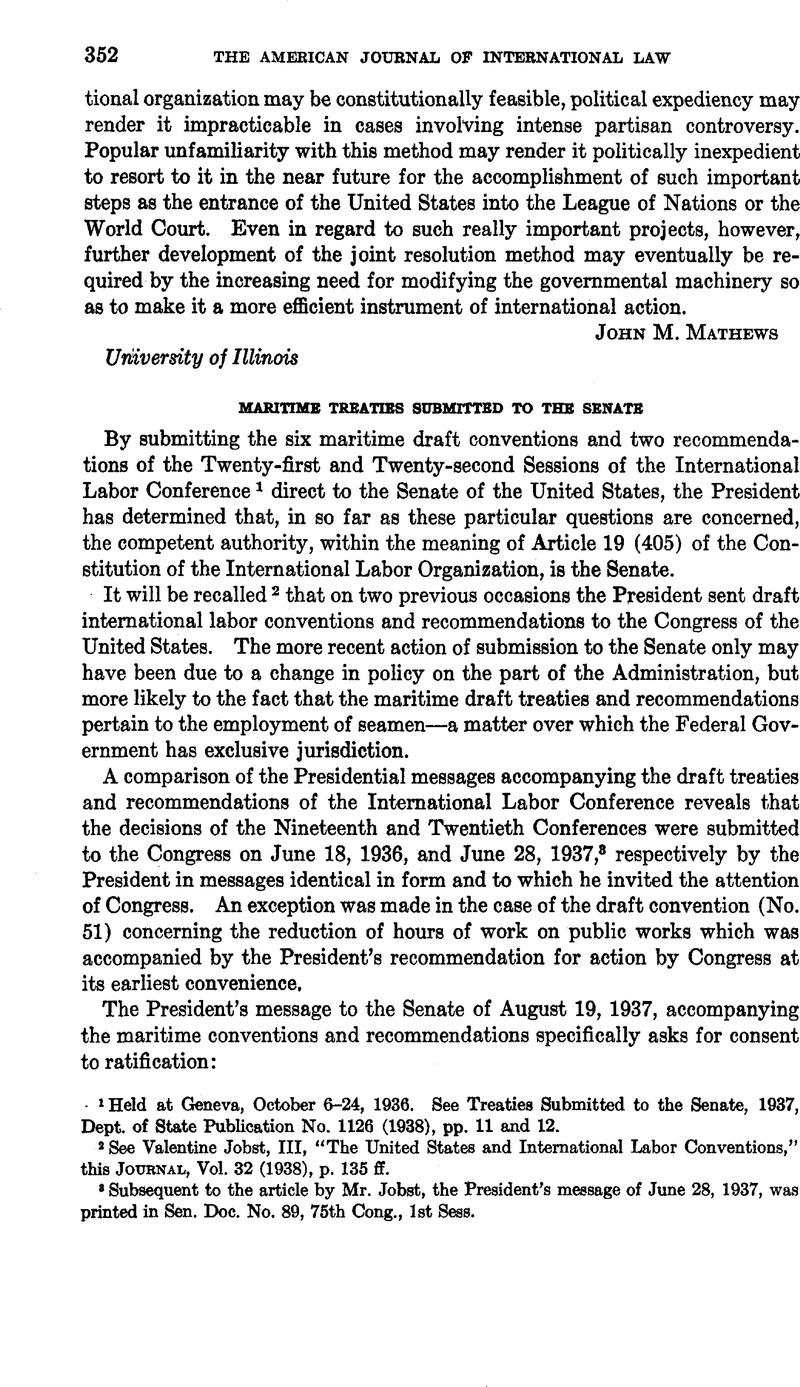No CrossRef data available.
Article contents
Maritime Treaties Submitted to the Senate
Published online by Cambridge University Press: 12 April 2017
Abstract

- Type
- Current Notes
- Information
- Copyright
- Copyright © American Society of International Law 1938
References
1 Held at Geneva, October 6–24, 1936. See Treaties Submitted to the Senate, 1937, Dept. of State Publication No. 1126 (1938), pp. 11 and 12.
2 See Valentine Jobst, III, “The United States and International Labor Conventions,” this JOURNAL, Vol. 32 (1938), p. 135 ff.
3 Subsequent to the article by Mr.Jobst, , the President’s message of June 28, 1937, was printed in Sen. Doc. No. 89, 75th Cong., 1st Sess.Google Scholar
4 Sen. Ex. Docs. V to CC, incl., 75th Cong., 1st Sess., 1937, p. 2. Made public Nov. 30, 1937.
5 Op. cit., p. 5.
6 “In the case of a federal state, the power of which to enter into conventions on labor matters is subject to limitations, it shall be in the discretion of that government to treat a draft convention to which such limitations apply as a recommendation only, and the provisions of this article with respect to recommendations shall apply in such case.”
7 The Senate does not ratify, but constitutionally gives its advice and consent to ratification. This is what the President requested in his message of Aug. 19, 1937.
8 Op. cit., pp. 30–31, Sen. Ex. Docs. V to CC. The memorandum prepared by the Solicitor’s office is found on pp. 32–34.


